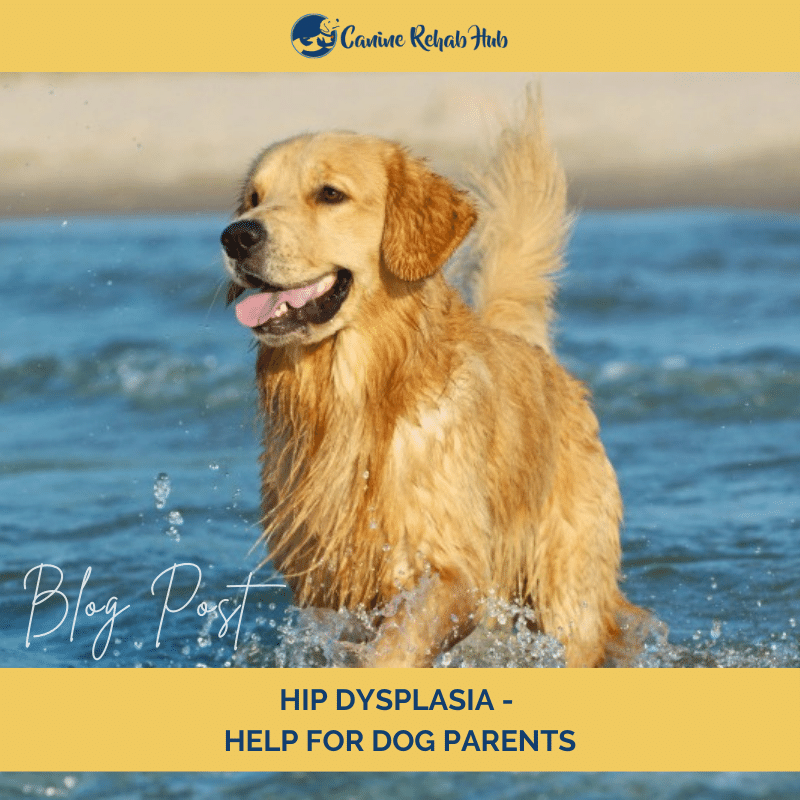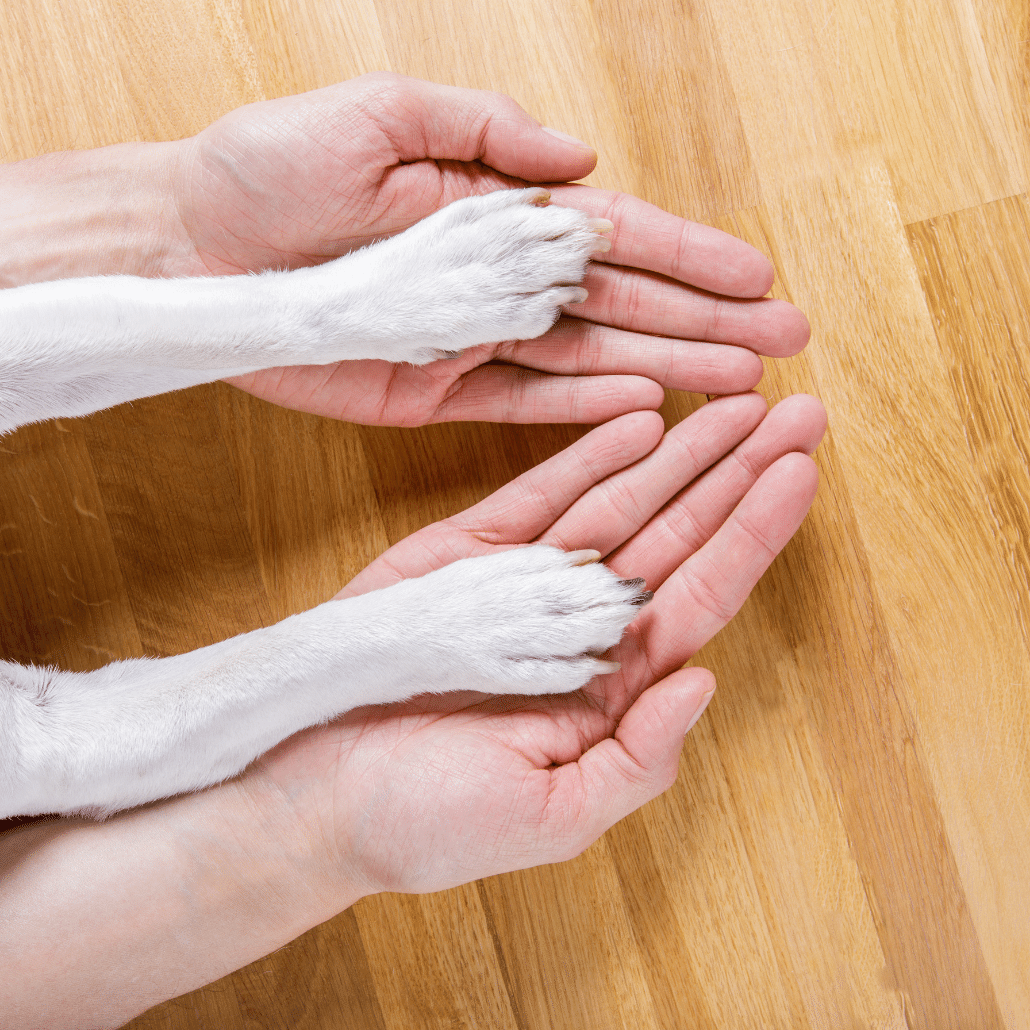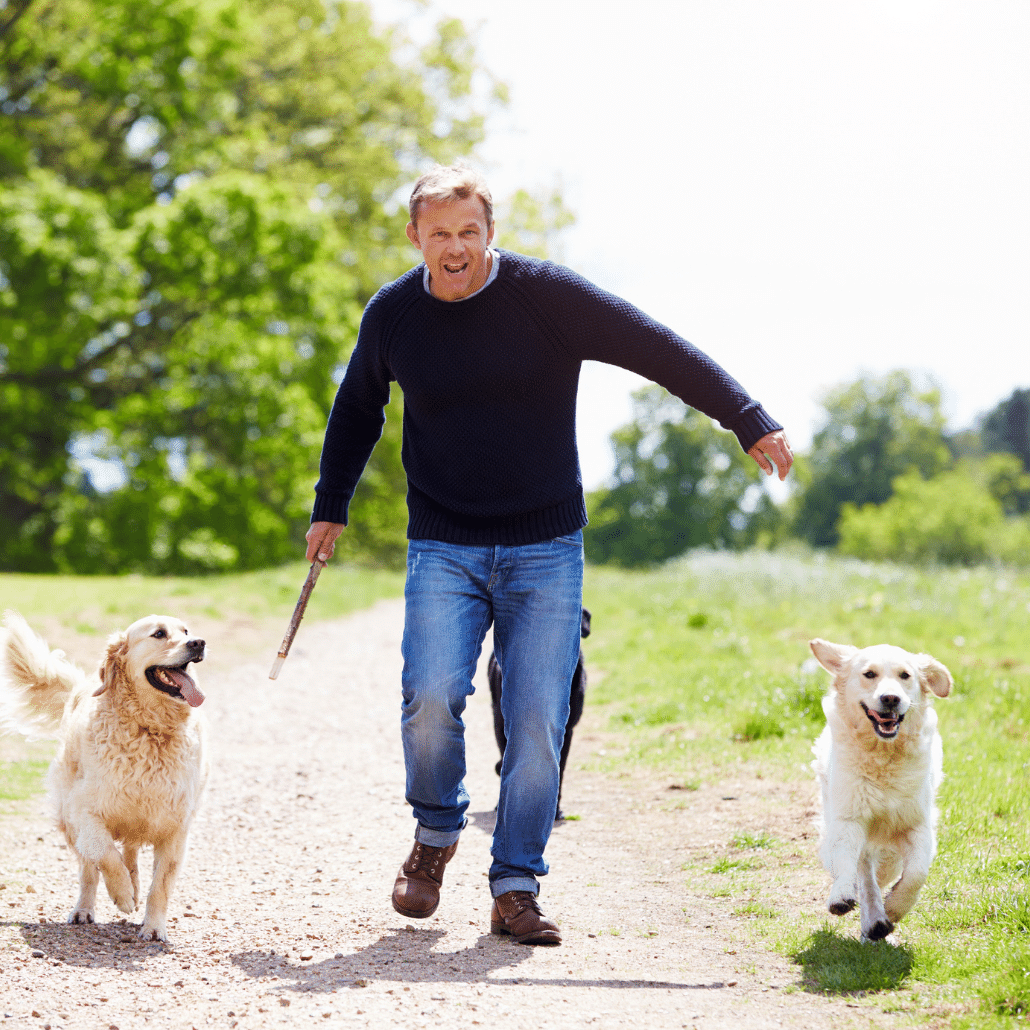Detecting Subtle Signs of Pain Long Before Your Dog Will Tell You
And How This May Drastically Improve Your Dog’s Life
Subtle signs of pain in dogs are often missed or completely unknown to dog parents and even missed by our veterinarians at times. Yet, it is very important to know the subtle signs of pain in dogs so that we can help our dogs feel their very best. In this blog, we discuss pain in dogs in general, why they tend to hide it, as well as subtle signs of the pain and how to become empowered as a dog parent to be your dog’s detective and your dog’s best advocate.
So, what’s the deal with pain in dogs and why do they wait so long to tell us that they are hurting?
Why didn’t she tell me sooner? Why didn’t I see the signs?
What’s more is that I’d been in the canine physical therapy profession for 13 years at that point and trained to look for these things, so how did I miss it? There’s no blame or guilt any of us should feel if we are missing something.
Dogs are wired to hide pain.
But the good news is that there’s a loop-hole and we can take advantage of it in order to be proactive and provide the best care for our dogs.
Here’s the scoop…
First, most people (me included, until I learned this valuable lesson) only think to evaluate our dogs if we notice a potential problem, maybe we notice a difference in how they are walking or some hesitation to go up stairs, for example. And then we have them evaluated.
Or maybe we trust that our primary veterinarian does a good enough job checking out the musculoskeletal system and we believe all is well when it really isn’t. This happens all too often.
Next, everyone knows the obvious signs of pain. For example, when a dog cries or yelps, or starts limping, or holding a leg up, these are definitely signs of musculoskeletal pain.
Some other fairly obvious signs of pain in dogs:
~ Holding the tail between the legs
~ Not sitting squarely
~ Hesitating to go up stairs.
I want you to really think about this one thing:
Most dog parents know that all of these signs warrant further investigation and veterinary care for a diagnosis and a treatment plan.
When do our dogs tell us these things?
When something first starts hurting or much later?
Unfortunately, it’s almost always much longer after the pain begins.
But there IS a way to find out much sooner.
And there are all sorts of advantages and nothing to lose.
So what can we do about detecting sublte signs of pain in dogs sooner?
Remember, I didn’t discover the pain in Happy until 4 years after I got her and yet she had hip dysplasia that whole time and no veterinarian ever caught it (they weren’t looking closely enough because most of us – even the professionals – are not in the mindset of investigating the closely until we notice an obvious sign and not until then).
How do we take back some control over our dog’s health and wellness and become detectives and learn the more subtle signs that are present (but hidden) early on?
After all, what would it be worth to you if you could find out your dog had an orthopedic issue long before your dog would ever tell you with the obvious signs that we already know to look for?
I could have had Happy on joint supplements for 4 full years and modified her exercise in order to slow down the progression of her arthritis. I can never get those 4 years back.
Dogs tend to be stoic and hide their pain, some more than others.
It’s in their DNA and evolutionary history, so it’s simply their nature to not show outward signs of pain because they don’t want to be seen as the weakest member of the pack. Right?
So, they hide it for as long as possible and they don’t tell us. If only they spoke English…
Because in contrast, we humans might say something like this to our loved one, “My hip is starting to hurt a little bit and I don’t know what is going on.” Or…”You know my knee feels a little funny, something just doesn’t feel quite right.”
Those are the kinds of comments we would make right when we started feeling something, which can be long before it’s bad enough for us to the seek medical attention.
What dogs tend to do is they often wait until it’s the equivalent of your son falling down on the basketball court with a torn cruciate ligament. And suddenly there’s some crying and getting help walking off the court, not putting any weight through the leg….that kind of thing.
We humans might say, “You know, my back is a little sore, my hips are a little sore, my knees are a little sore. I might need to take some joint supplements. I’m in my 40s now and it’s probably a good idea before I get up into my 60s and 70s and 80s if I’m lucky enough to live that long.” And so we do.
But what about our dogs?
In contrast, dogs often show no obvious signs early on and the subtle signs of pain in dogs can easily be missed by even the most attentive dog parents. Dogs can be the equivalent of being in their “60s-80s” when they finally start looking like they are limping a little bit.
Or maybe you notice that your dog has slowed down a little bit or isn’t getting up as much or as quickly as he/she used to.
Maybe your dog is pacing a little bit and reluctant to lie down. You might say, “Hmmmm, something is going on. Let me take them to the vet and see.”
All the while, the arthritis has been going on hidden from us for years.
Okay, so now after discussing all of those scenarios, imagine if there were a way to evaluate your dog at home yourself when you first get your dog and every few months after that (or however often you want to) throughout the course of their lives to search for the subtle signs of pain in your dog.
By doing so, you can often find subtle signs…the ones the dogs really don’t want other dogs to see, but they are there to discover if we look closely enough.
Discovering The Subtle Signs of Pain In Dogs
What if you knew how to do some basic evaluation of the joints and muscles and special tests that are simple to perform at home and would give you hugely valuable information to know if your dog checked out A-OK or if it warranted a trip to your vet so you could get a jump on things with early intervention?
This way, if there is an issue brewing, you can provide a lot of early intervention, making simple changes in your dog’s life that you otherwise wouldn’t know to make. And by doing so, you create a big difference in the quality of your dog’s life long-term.
Wouldn’t that be awesome?
Some examples of detecting subtle signs of pain in dogs…
You might detect that your dog has hip dysplasia, biceps tendonitis, arthritis in the elbow, neck pain, etc.
And you will be finding this out long before the dogs would show you the signs of pain on their own.
Take an agility or highly competitive dog who is prone to biceps tendonitis due to the stress that some sports place on the shoulder.
Wouldn’t it be great to know when it was sore after a training session or competition and to intervene early at home long before your dog would tell you it hurt? Imagine simple solutions to implement after training sessions and preventing a long-term irritation that would very likely otherwise escalate over time and then possibly warrant expensive imaging and a surgical procedure.
It truly is like being a detective and caring enough to give your dog this extra focus for a few minutes to ensure that their musculoskeletal health is in good shape or to determine if there’s an issue that can be dealt with sooner rather than later, saving your dog potentially years of pain and possibly avoiding unnecessary surgeries, too!
Another example - cruciate ligament tears in dogs…
Many dog parents worry about cruciate tears. The ligament can be torn acutely (all of sudden) due to trauma, but more commonly it is a slowly progressing wearing down of the ligament.
If you knew how to test for a sign that it could be at risk, you could alter your dog’s activities and do things to protect the joint (in this case, strengthening the muscles that assist that ligament and avoiding activities that place stress on the ligament would be key).
So as you can see, by detecting a brewing issue really early, it is possible to do things to prevent that injury. And it is simple to do things to slow down the progression of arthritis, too.
Subtle Signs of Pain In Dogs
I am going to share with you some subtle signs of pain in dogs to watch out for to get you started…
~ Excessive Panting – When a dog is panting and not hot from heat or exercise, this can be a sign of pain.
~ Excessive Licking – When a dog licks at a joint or body part or as close as they can get to the area, this can be a sign of pain.
~ Pacing – When dogs are in pain and can’t get comfortable or they know it’ll hurt to go from standing to lying down, they often pace around the house.
~ Dilated Pupils – The pupils appearing larger than normal are a sign of pain.
Other signs that I just want to mention:
~ Multi-Step Pooping – It sounds funny, but I’m serious. If your dog rotates around and around or take steps forward and seems to keep shifting positions during a normal length of going to the bathroom, this could be a secret sign that something hurts in the hind end.
~ Hesitation to squat or a male dog not lifting his leg to pee can sometimes be a sign.
These are a some of the more common subtle signs…it’ll get you off to a great start on being on the lookout.
There are many, many more signs and indicators that will come out from YOU doing a physical therapy evaluation in the comfort of your own home (where your dog is not nervous and tense).
Doing a physical therapy evaluation at home will not just uncover indications of pain, but will most often locate the source of pain. And that can be extremely beneficial to know before you go to the vet, so that you can communicate it to the vet at the time of your appointment.
To read the entire guide on Detecting The Subtle Signs of Pain Long Before Your Dog Will Ever Tell You, click here to grab it!
If you haven’t yet liked the Canine Rehab Hub Facebook page, click here to the direct link to it.
I’d love for you to “like” it and share any feedback and/or questions you many have about this free guide.
Here’s to fetching your dog’s best life!
Sending lots of love to you and your dogs, 




















